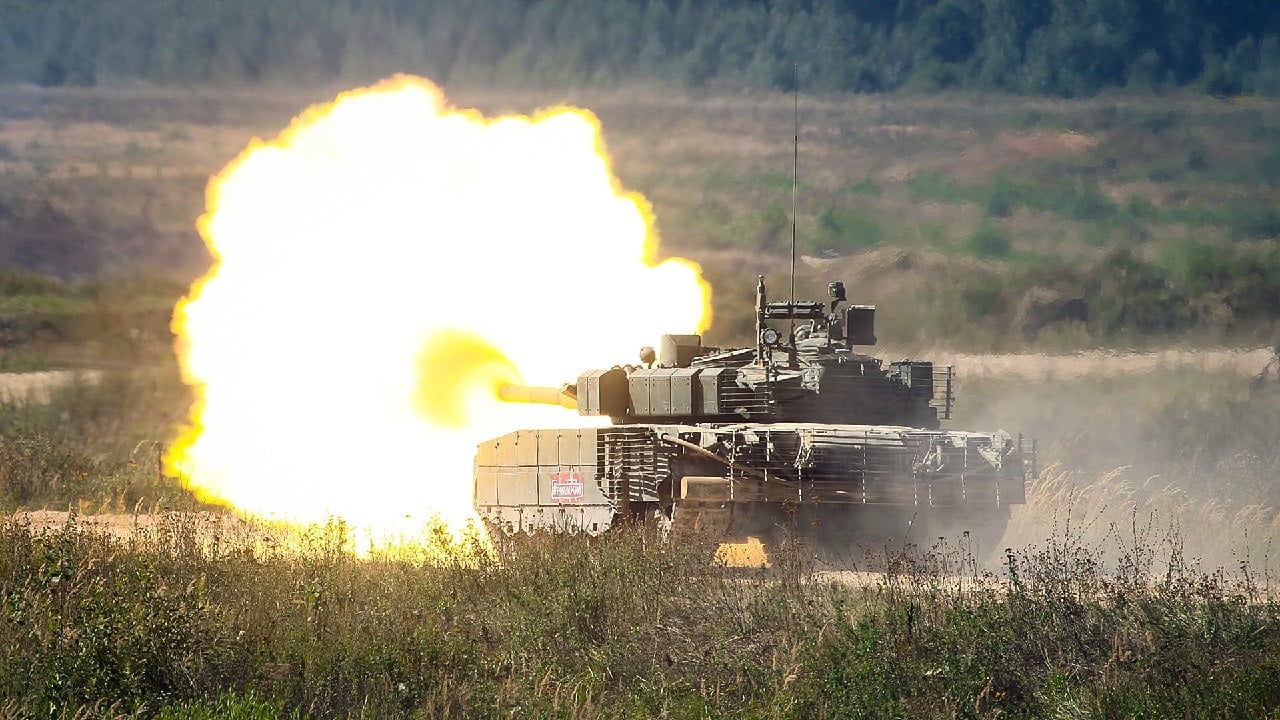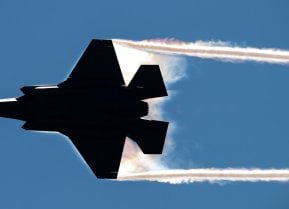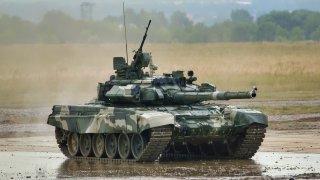Russia's T-90M Tank Is Getting Hammered Hard in Ukraine
The T-90M Main Battle Tank (MBT), once heralded as "Russia’s most advanced armored vehicle," is struggling in Ukraine.
Summary: The T-90M Main Battle Tank (MBT), once heralded as "Russia’s most advanced armored vehicle," is struggling in Ukraine.

-Initially expected to dominate, the T-90M has faced significant losses, highlighting the vulnerabilities of modern tanks in contemporary warfare.
-Russia has lost nearly 100 T-90M tanks, exposing the limitations of even the most advanced models against Ukraine's effective use of drones and NATO-provided anti-tank weapons.
-This situation underscores the need for military adaptation to new combat realities.
-The T-90M's performance illustrates that advanced technology alone is insufficient without updated strategies and tactics suited to the modern battlefield.
Russia’s T-90M Tanks Struggle in Ukraine’s Modern Warfare
There’s an old adage which goes, “the bigger they are, the harder they fall,” one could ascribe this notion to Russia’s T-90M Main Battle Tank (MBT). At one time, it was dubbed as “Russia’s most advanced armored vehicle.” Now, it is struggling to hold its own in the killing fields of Ukraine. This armored beast was supposed to be the top-of-the-line MBT deployed to Ukraine.
Its presence alone would send the Ukrainians scattering. It has not performed as expected in Ukraine.
A Growing Problem for Modern Militaries
In fact, its mixed performance in combat highlights why the even more sophisticated Russian MBT, the T-14 Armata, has been kept in reserve for the duration of the war. It further explains why the Russians have preferred to rely on their decades-old Soviet-era MBT, the T-72. The old T-72s are cheap and easy to mass-produce. If they’re lost, it’s not as detrimental to the Russian Armed Forces as would be losing large numbers of the T-90M or the T-14 Armata.
Known as the Proryv-3, the T-90M entered service with great fanfare. It has now received less laudatory publicity because of its mixed record in combat. The T-90M was seen as not only an upgrade from the original T-90 MBT but as a significant step up from the legendary T-72. The new T-90M has a 125mm 2A46M-4 smoothbore gun, it is able to fire missiles at enemy tanks at a distance of up to three miles away, as well as deploying standard ammunition.
Since the beginning of the Ukraine War, however, the Russians have lost almost 100 of these advanced tanks. Russia has visually confirmed 97 T-90 losses, with the more advanced T-90M making up a significant portion of these losses. This suggests that the T-90M, despite its advanced features, is not as invincible as the Russians thought it was.
It also highlights an ongoing issue that both the Russian and US militaries have yet to fully acknowledge and adapt to: the changing nature of warfare.
T-90M Tank and the Failure to Adapt
For example, the reason that so many Russian tanks have been lost is, in part, because of Ukraine’s robust drone fleet and the NATO-provided anti-tank weapons, such as the Javelin. Drones have completely changed the dynamic of modern combat. And this is a reality that is apparently lost on many war planners today in the capitals of the great military powers.
The T-90M is another example of pride.
You see, like the Americans with their aircraft carriers, the T-90M was viewed as a symbol of Russian military power. It was an example that Russians used when seeking to convince themselves—and the world—that Russia had recovered from the doldrums of the post-Soviet era. And because the T-90M has had a mixed record (not great, not terrible, as the meme goes), it has embarrassed the Russians.
In the end, the T-90Ms mediocre performance in Ukraine serves as a stark reminder that no matter how advanced a weapon is, it is only as good as the strategy, tactics, and realities on the ground in warfare. The realities on the ground in Ukraine is that the terrain is difficult for certain tanks to operate.

Because of the presence of large drone swarms in the war, as well as effective anti-tank weapons, many of the strategies need to be updated (and, therefore, the platforms and the way they’re used must be fundamentally changed). Failure to adapt has led to the wanton destruction of systems, such as the T-90M, once assumed to be so advanced they would crush all who opposed them.
The T-90M is not a total failure. It just isn’t necessarily worth the hype or the investment.
About the Author
Brandon J. Weichert, a National Interest national security analyst, is a former Congressional staffer and geopolitical analyst who is a contributor at The Washington Times, the Asia Times, and The-Pipeline. He is the author of Winning Space: How America Remains a Superpower, Biohacked: China’s Race to Control Life, and The Shadow War: Iran’s Quest for Supremacy. His next book, A Disaster of Our Own Making: How the West Lost Ukraine, is due October 22 from Encounter Books. Weichert can be followed via Twitter @WeTheBrandon.
All images are Creative Commons or Shutterstock.


